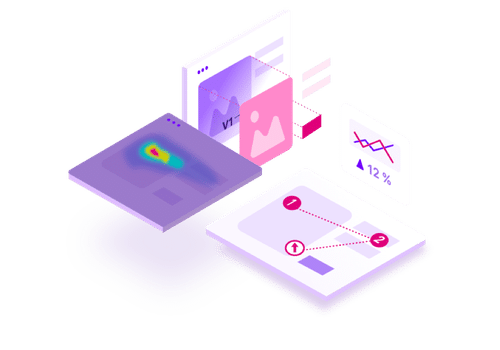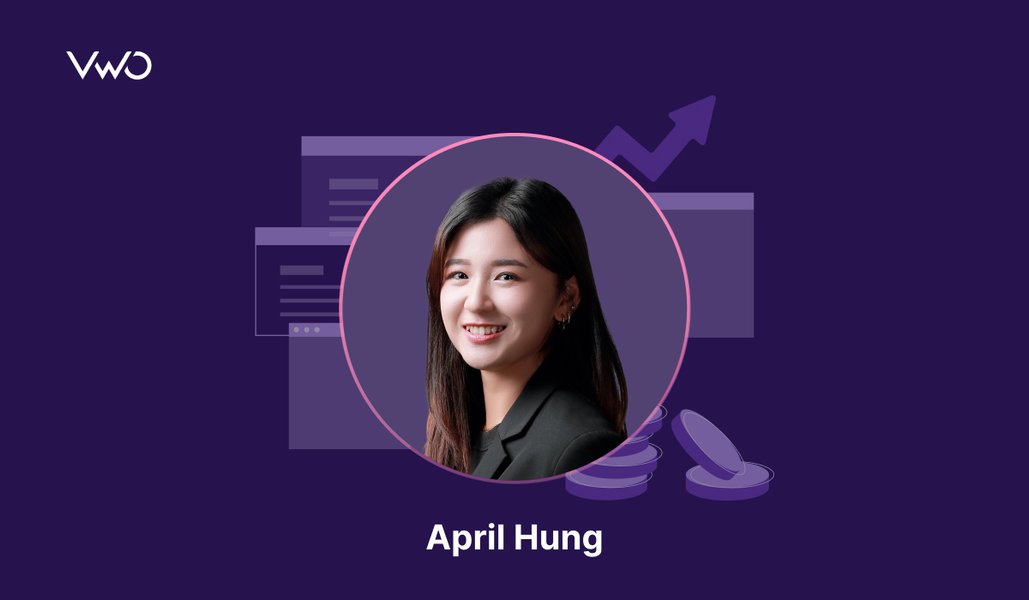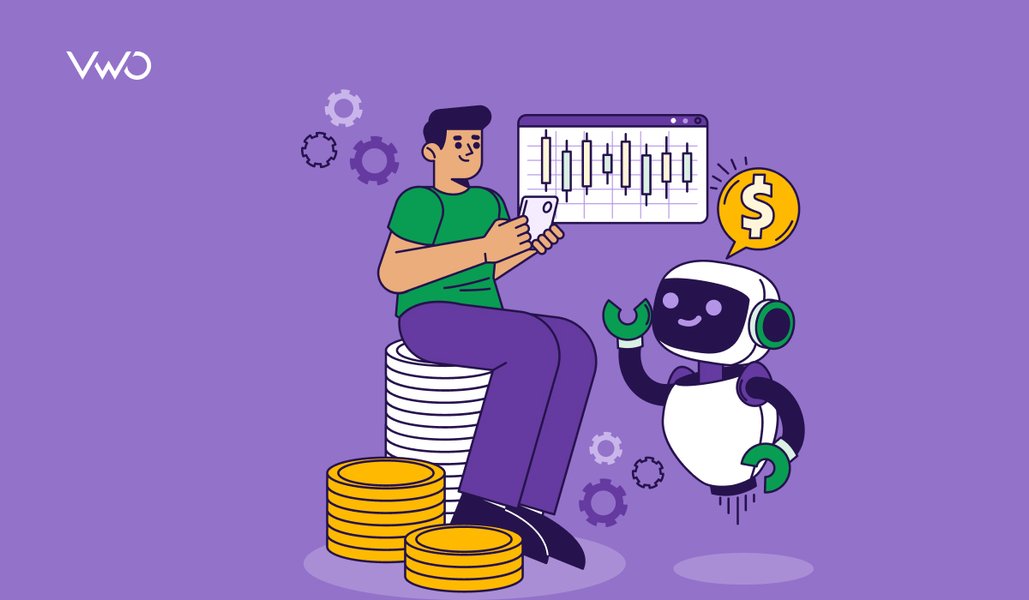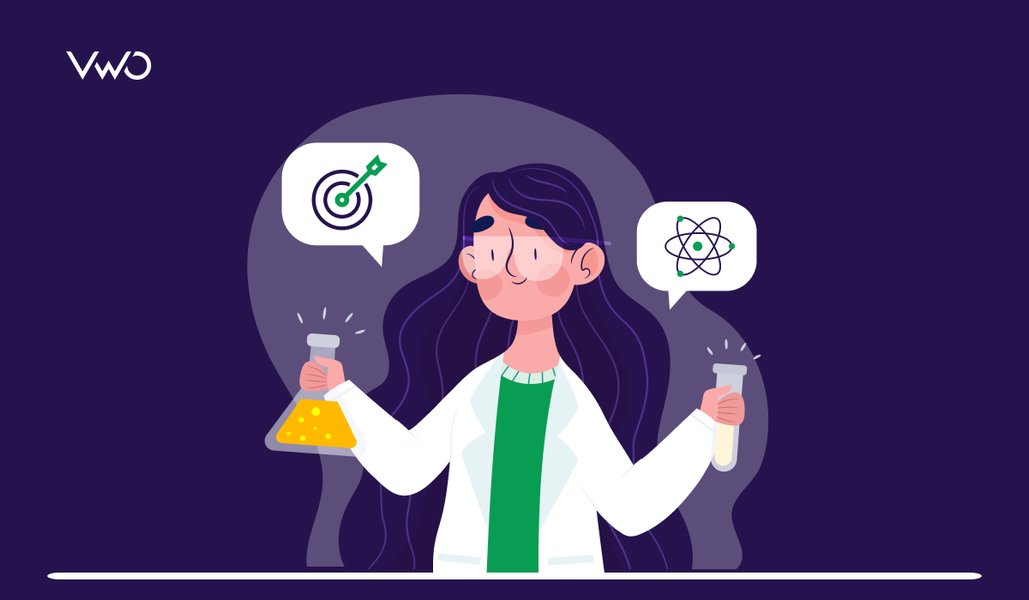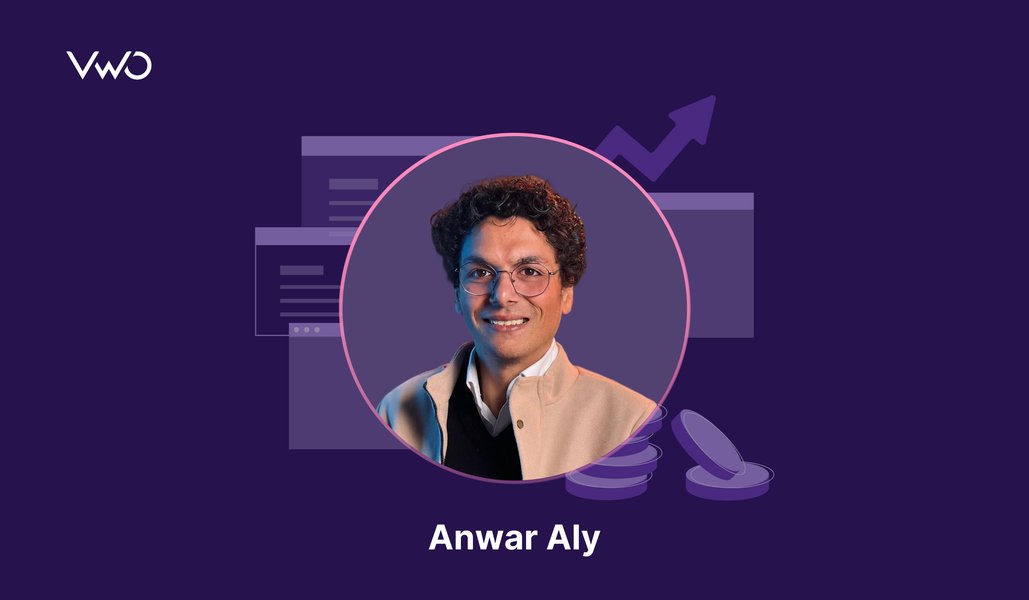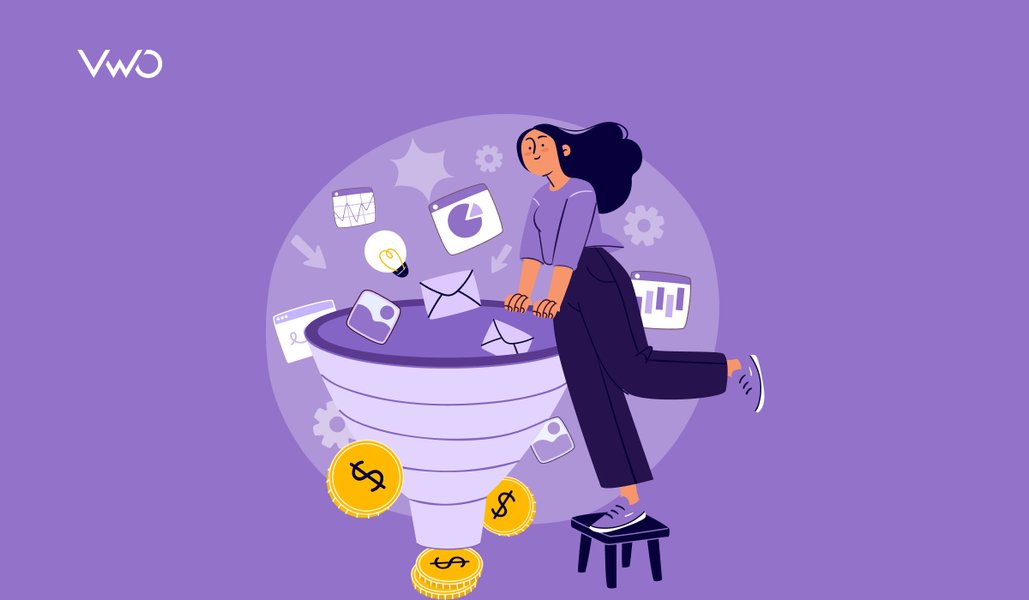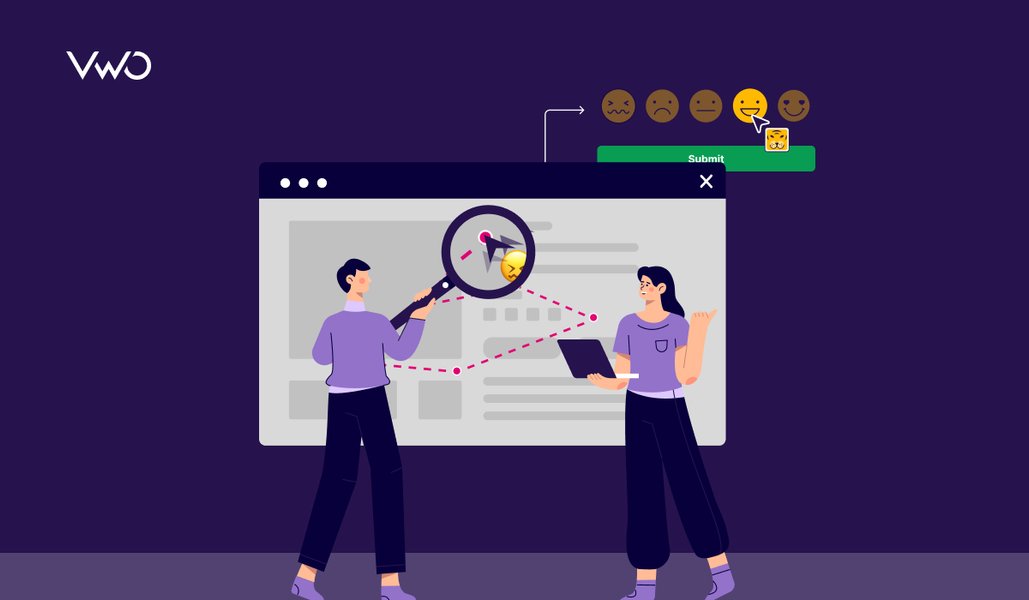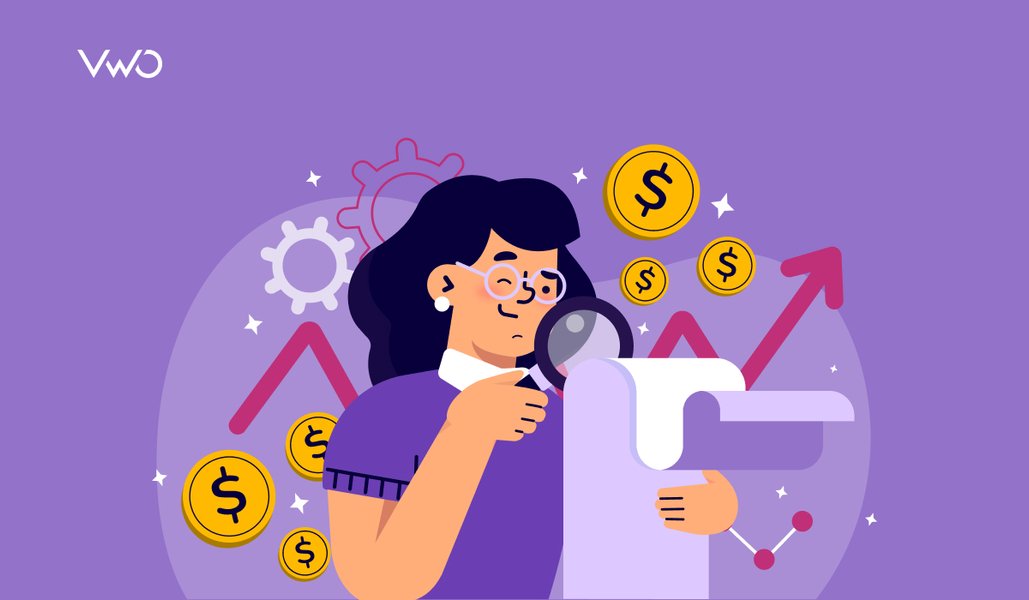What Is a Good Funnel Conversion Rate? (+ How to Improve It)
A good funnel conversion rate is the percentage of prospects who move successfully from one stage of your sales funnel to the next.
Simple enough, right? But here’s the catch: 96% of visitors aren’t ready to make a purchase the first time they land on your website.
That means most of your audience won’t convert immediately, but they’re not lost causes. They may be open to engaging, learning, or sharing their details if you provide value upfront.
That’s why understanding funnel conversion rates matters; they show where
prospects drop off, and what you can optimize to move them closer to purchase.
So, what’s considered a “good” funnel conversion rate, and how can you steadily improve yours? Let’s break it down.
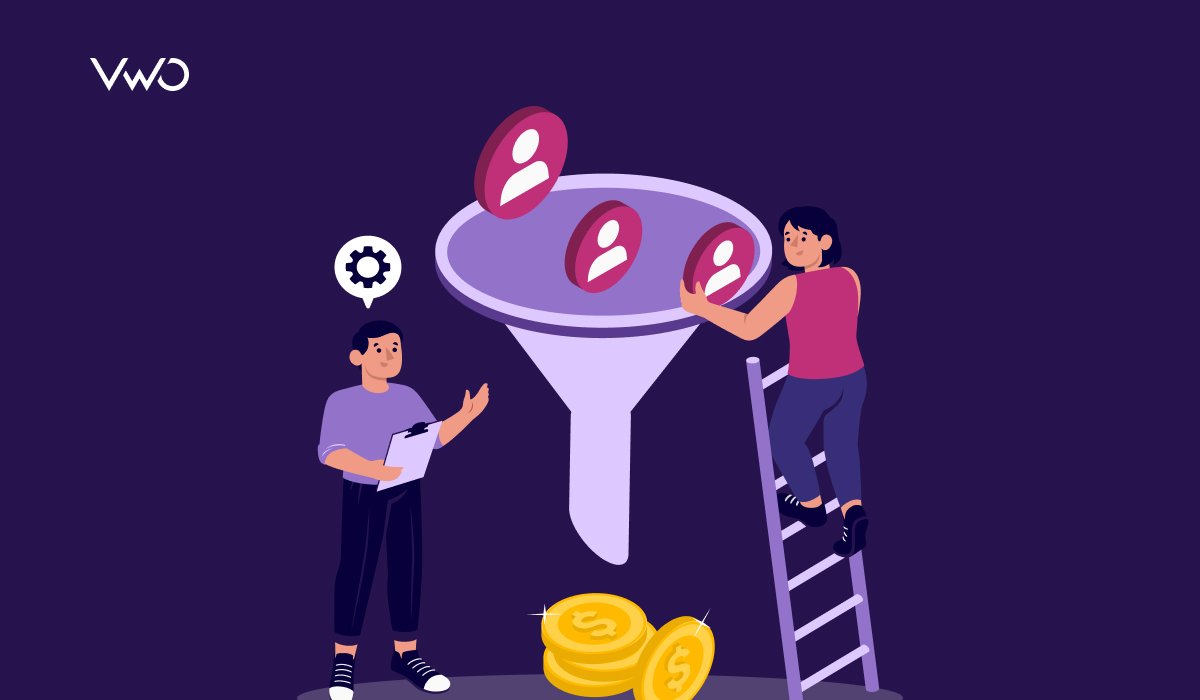
What is the funnel conversion rate?
Funnel conversion rate shows how effective your strategies are in guiding people from initial interest to final action. This metric tracks the percentage of people who move from one stage of your sales funnel to the next to complete a desired action, whether that’s making a purchase, requesting a demo, or signing up for a newsletter.
While most funnels follow the broad stages of awareness, consideration, decision, and action, the specifics differ depending on context. For a marketing funnel, this might mean visitor → lead → marketing-qualified lead (MQL). For a sales funnel, it could mean sales-qualified lead (SQL) → opportunity → closed-won customer.
By measuring conversion rates across these stages, teams can identify where prospects drop off, uncover friction points, and target areas for improvement. For marketers, this reveals how effective campaigns are at generating and nurturing leads. For sales teams, it shows how efficiently qualified opportunities move toward closure. Together, funnel conversion rate provides a shared view of how well strategies are guiding people forward.
How to calculate sales funnel conversion rate
Calculating funnel conversion rate is straightforward. The formula for sales funnel conversion rate is:

For example, if 1,000 visitors land on your website and 50 end up purchasing, the calculation is:
(50 ÷ 1,000) × 100 = 5%
This formula applies to every stage of the sales funnel. In a marketing context, it might capture the percentage of visitors who become leads or MQLs. But in a sales funnel context, it becomes even more critical: measuring how many SQLs progress to opportunities, or how many opportunities ultimately convert into closed-won customers.
By tracking these numbers stage by stage, you get a clear picture of where deals stall, where prospects disengage, and where the sales process can be streamlined.
What is a good funnel conversion rate?
What counts as “good” can feel like a moving target. You might see plenty of traffic coming in, but only a fraction of it turns into revenue—and that’s normal. Funnel conversion rates vary by industry, funnel type, and sales cycle. Here’s what the data shows:
Overall average
Most sales funnels convert between 3% and 10%, depending on industry and funnel type. A large-scale landing page analysis revealed a median conversion rate of 6.6% across various industries. Another report reviewing 14 industries placed the overall average lower, at about 2.9%.
B2B funnels
B2B funnels typically convert at lower percentages due to longer decision cycles and multiple stakeholders.
Early stages (Visitor → Lead) often convert at 2%–5%.
Later sales stages (Opportunity → Closed-Won) usually fall between 15% – 30%, depending on industry
These lower rates are offset by higher deal values and more predictable recurring revenue.
B2C funnels
B2C sales funnels tend to perform better since purchase cycles are usually faster and less complicated. A global eCommerce benchmark study showed an average purchase conversion rate of 3.17%, with top-performing niches reaching between 5% and 15%. Conversion from cart → purchase is often the most critical stage to optimize.
High performers
Sales funnels achieving 10%+ are considered excellent. These are most often found in organizations with strong product–market fit, a streamlined sales process, and consistent optimization programs. Some industry reports highlight examples where stage-level conversions regularly exceed 50% once leads are qualified, proving how optimization compounds at scale.
Stage-specific matters
Even with a “good” overall number, certain stages may underperform, creating friction that keeps potential customers from moving forward. Benchmark data shows, for example, Lead → MQL at 25–35%, MQL → SQL at 13–26%, and SQL → Opportunity at 50–62%.
Takeaway: Instead of chasing one universal number, use these benchmarks to compare against your own sales funnel, stage by stage. That’s where leaks and growth opportunities usually appear.
Average funnel conversion rates by stage
A funnel isn’t just one number; it’s a series of handoffs. Each stage has its own benchmarks, and even a small drop in performance at one step can drag down the whole sales funnel. According to a recent industry benchmark report, here’s how conversion rates typically look across the key stages:
- Website Visitor → Lead: around 1–5%, depending on traffic quality and landing page relevance.
- Lead → Marketing Qualified Lead (MQL): roughly 25–35%, as only a portion of leads demonstrate genuine buying interest.
- MQL → Sales Qualified Lead (SQL): about 13–26%, where marketing’s best leads are validated by sales.
- SQL → Opportunity: usually 50–62%, as qualified leads turn into real pipeline potential.
- Opportunity → Closed-Won Customer: generally 15–30%, reflecting the final stage where sales effectiveness and deal value matter most.
Now, let’s see how this plays out with real numbers. Imagine 10,000 people visit your website:
- 10,000 visitors → 500 leads (5%)
- 500 leads → 150 MQLs (30%)
- 150 MQLs → 30 SQLs (20%)
- 30 SQLs → 18 opportunities (60%)
- 18 opportunities → 4 closed customers (22%)

From 10,000 visitors, you end up with just 4 paying customers. That’s why monitoring every stage is so important. A small lift: say, converting 30 SQLs into 25 opportunities instead of 18 can double your final revenue without touching your traffic numbers.
How to optimize funnel conversion rate
Getting more traffic won’t fix a leaky sales funnel. The real wins come from conversion funnel optimization, i.e., improving how well you convert the audience you already have. Here are proven ways to optimize sales funnel performance:
- Audit your funnel regularly: Don’t just look at overall numbers; dig into each stage to see where people drop off. If 1,000 visitors become 100 leads but only 2 sales, the problem isn’t traffic; it’s a leak further down. For sales, this could mean tracking how many SQLs turn into opportunities or where deals stall in negotiation
- Simplify landing pages: Visitors don’t want to fight through clutter. Keep the message clear, forms short, and CTAs prominent so it’s obvious what the next step should be.
- Personalize the experience: Segment by behavior, interests, or lifecycle stage, then deliver content and offers that feel relevant to where they are in their journey. Sales teams can mirror this personalization in demos and outreach, building continuity between what prospects see on the site and what they hear in conversation
- Nurture leads effectively: Many leads aren’t ready to buy right away. Use email sequences, helpful guides, or retargeting ads to keep the relationship warm until they’re ready to move forward. Effective nurturing ensures sales reps engage only when leads show clear buying signals.
- Shorten the sales cycle: Prospects hesitate when the sales process drags on. Offering demos, free trials, or instant access to resources can reduce delays and help them make decisions faster.
- Build trust with social proof: People trust other people more than brands. Highlight reviews, customer stories, or recognizable client logos to reassure prospects they’re making the right choice.
- Run A/B tests: Guessing what works wastes time. Test one variable at a time, like CTA copy or button placement, and let the data guide your next move. Testing pricing page layouts or demo booking flows ensures the sales team receives better-qualified, high-intent leads
- Follow up faster: The longer you wait to respond, the colder the lead becomes. Even a simple personalized reply within the first hour can dramatically increase the chances of closing.
The key is to focus first on the stage where the most revenue slips away, whether that’s leads failing to qualify, opportunities stalling, or deals going cold. Fixing one weak link at a time compounds improvements across both marketing and sales, helping you raise win rates without needing to constantly chase more traffic.
Access the free webinar to discover funnel optimization strategies that reduce drop-offs, improve conversions, and ultimately maximize ROI.
Factors affecting funnel conversion rate
Why do some sales funnels convert effortlessly while others leak at every stage? Your results depend on more than just traffic; it’s about how well you align with your visitors and the experience you deliver. Here are the biggest factors that shape how people move through the journey:
Audience relevance
A sales funnel works only if it resonates with the right people. Attract the wrong audience, and even the best-crafted offer won’t move them forward. The challenge lies in uncovering what your prospects truly value, their pain points, goals, and motivations. Aligning your funnel to visitor needs ensures your marketing and sales efforts aren’t wasted on the wrong audience.
Example: A SaaS company targeting small startups with enterprise pricing will see poor conversions. Tailoring messaging and pricing tiers to fit startup budgets can instantly lift results.
Strength of your offer
Reaching the right people isn’t enough if your offer feels bland or vague. To persuade visitors to act, the value has to be obvious and compelling. Strong offers usually combine three things: clear communication, a tangible benefit, and a differentiator that sets you apart from competitors. When the “why you” is undeniable, conversion feels like the natural next step.
Example: An eCommerce brand selling supplements might boost conversions by offering a free first-month supply, while a competitor only lists “10% off” with no clear added value.
Experience and usability
Your sales funnel’s design and flow can make or break conversions. Visitors are quick to abandon when pages load slowly, navigation feels confusing, or forms ask for too much. On the flip side, a seamless experience: fast, mobile-friendly, and supported by clear calls-to-action, creates confidence and momentum. When usability improves, it often shortens the sales cycle length, helping more prospects complete their journey.
Example: A retailer with one-click checkout will usually outperform a competitor asking for five separate form fields before purchase.
Lead qualification accuracy
If your funnel is packed with low-quality prospects, conversion rates will always disappoint. Accurate lead qualification ensures your team focuses on potential customers most likely to buy.
Clear qualification criteria, lead scoring models, and intent data help you prioritize high-value opportunities and improve overall funnel efficiency.
Sales engagement quality
Even the best leads stall without the right follow-up. Conversion often hinges on how relevant, timely, and consistent your outreach is. Personalized conversations, consistent follow-ups, and context-aware messaging create better experiences, shorten sales cycle length, and build trust that moves deals forward.
Proof and trust signals
As prospects move deeper into the sales funnel, hesitation often grows, especially near pricing or final commitment stages. Trust signals like testimonials, case studies, industry certifications, and security badges reduce perceived risk and reinforce credibility. When added at critical touchpoints, these proof elements give potential customers the confidence to move forward and close.
How VWO helps you optimize sales funnel conversion rates
The steepest leaks often happen late in the sales funnel; SQLs stall, opportunities slip, and too few make it to Closed-Won. These are sales-owned stages where small improvements have the biggest revenue impact. VWO helps sales teams pinpoint why deals drop, optimize how they engage prospects, and close more opportunities, while also aligning with marketing to ensure the right leads enter the pipeline in the first place.
VWO Insights
When you run your first funnel analysis in VWO, you uncover why, alongside how many people drop off. VWO Insights maps the entire customer journey and shows exactly where users abandon, whether it’s during onboarding, checkout, or before hitting “subscribe.”
- Session recordings: Replay exactly where prospects get stuck, like trial users abandoning onboarding or buyers hesitating at the pricing page.
- Heatmaps: Spot which sections of pricing or feature pages draw attention versus being ignored.
- Funnel analysis: Track drop-offs across marketing and product journeys, sign-ups, free trials, onboarding, checkout, so marketing can hand over leads who are truly engaged and more likely to convert in sales conversations.
Sales gets warmer leads with clearer context, while marketing knows exactly where to reduce friction.
Use VWO Copilot to analyze heatmaps, session recordings, and surveys, turning raw behavior data into actionable insights and highlighting the most impactful opportunities to optimize your funnel.
VWO Plan
If you’ve ever brainstormed funnel fixes, you know the list gets long fast: simplify the checkout, tweak the CTA, change pricing layout, redesign the landing page. But the real question is: which one should you test first?
- Prioritize fixes: Rank ideas by potential impact on funnel progression (trial → activation, activation → upgrade). Instead of spreading resources thin, teams can agree on which changes will directly influence pipeline velocity and revenue.
- Track experiments: Follow each idea from hypothesis to test to measured outcome, so there’s complete visibility into what worked, what didn’t, and what should be tried next.
Without a shared system, sales and marketing often work in silos; sales hears objections but has no mechanism to act on them, while marketing runs campaigns without knowing which changes help deals close faster.
VWO Plan creates a single, prioritized roadmap that bridges these gaps, ensuring both teams focus on the funnel stages that matter most to revenue rather than chasing isolated quick fixes.
VWO Testing
Redesigning a page or tweaking copy without proof is just guesswork, and guesswork wastes time and budget. With VWO Testing, you can validate every change before rolling it out.
- A/B test: Compare proposal templates, demo booking flows, or pricing page layouts to see which variant moves more prospects forward.
- Multivariate test: Experiment with different combinations of CTAs, form fields, and offers to identify the mix that drives higher engagement.
- Server-side test: Simplify SaaS onboarding flows or feature bundles to increase trial-to-paid upgrades and reduce churn.
VWO Testing ensures every change, whether on a pricing page or in an onboarding flow, is validated with real data before it affects the funnel. That way, only proven improvements make it downstream, giving sales teams leads that are better qualified and more likely to convert.
Imagine a SaaS company where free trial signups are strong but very few users upgrade to paid plans. Funnel analysis may highlight a big drop-off during onboarding: users feel overwhelmed by too many setup steps. Instead of guessing at solutions, the team could test two flows: the existing, feature-heavy one versus a simplified, quick-win version. If the shorter path drove higher trial-to-paid conversions, they’d have clear evidence of what to roll out at scale.
VWO Personalize
- Tailor by stage: Show ROI calculators to late-stage evaluators, case studies to returning visitors, and upgrade offers to trial users nearing expiry.
- Segment by context: Adapt experiences based on visitor behavior, acquisition source, or device type.
- Test personalization: Run A/B tests on different personalized experiences to validate which resonates most.
Prospects at different funnel stages need different proof points. A one-size-fits-all approach means SQLs and opportunities may not see the information they need to move forward, forcing sales reps to fill gaps manually.
With VWO Personalize, buyers get relevant, high-value content at every touchpoint, building trust earlier, reducing objections, and giving sales reps better-prepared opportunities that are easier to close.
See how PearlsOnly, an online jewelry retailer, partnered with VWO Services to simplify its checkout page and highlight key offers, reducing abandonment and driving a 10% revenue uplift.
Also read how VWO used its own platform to redesign the onboarding journey with a guided “Get Started” checklist, streamlining setup and feature adoption, resulting in a 127% increase in free trial to paid conversions. Take the free trial or request a demo to experience the VWO platform.
Quote
Reliable growth comes from closing data loops, aligning teams around customer behavior, and running continuous experiments to refine the value proposition. – David Issac Mathews, CGO
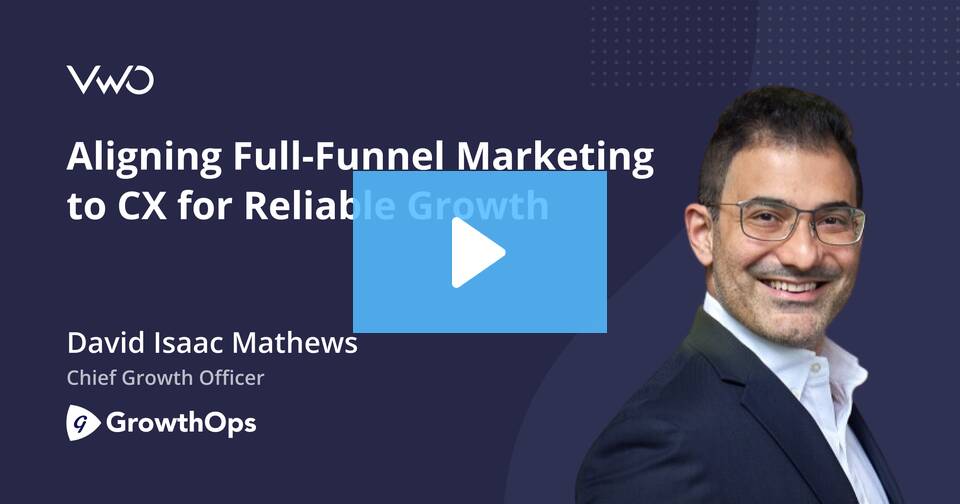
FAQs
A high-converting funnel is one that consistently outperforms industry norms by moving prospects smoothly from awareness to purchase. It minimizes drop-offs at each stage through precise targeting, a seamless user experience, and ongoing testing and optimization.
A higher conversion rate is always better, but what matters most is how it compares to your industry benchmarks and where drop-offs occur. Even a funnel with an “average” rate can deliver big gains if you steadily optimize stage by stage.
On average, most sales funnels convert between 3% and 10%, though B2B funnels are usually lower (1% and 5%) due to longer buying cycles, while B2C funnels often convert higher (5% and 15%).

